Israel-Hamas War: What happened on day 103?
Hostage's mother accuses IDF of poisoning son to death inside tunnel • Medicine en route to Gaza hostages, undergoing IDF inspection at crossing
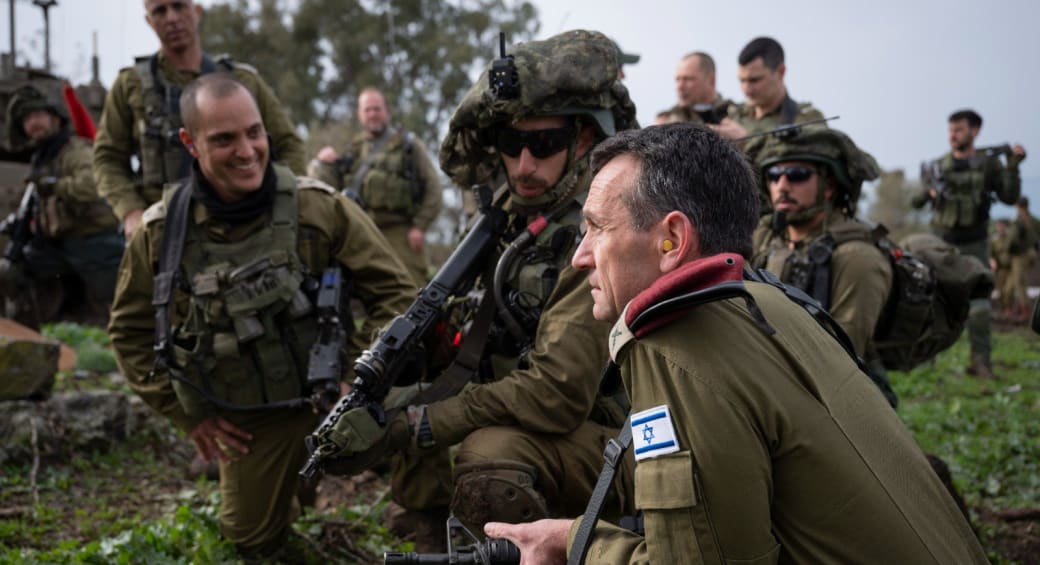

Netanyahu delayed new Gaza hostage deal, left war cabinet in the dark - report
According to reports, the ministers involved in the discussions found out about this later, and some of them even confronted the government to express their anger.

Prime Minister Benjamin Netanyahu unilaterally delayed and backtracked on agreed-upon outlines for the release of hostages without consulting the cabinet, according to Israeli media sources on Wednesday.
In recent days, the political leadership in Israel discussed potential conditions for a new and proactive negotiation that could eventually lead to a hostage deal. The negotiations were expected to be pushed forward by a mediator.
However, Prime Minister Binyamin Netanyahu delayed the talks and increased the demands that had been agreed upon, according to reports.
Discussions over the conditions were held with political echelon leaders, namely Defense Minister Yoav Gallant and Ministers Benny Gantz and Gadi Eisenkot. These discussions eventually brought about agreed-upon conditions that would guide the advancement of negotiations, which would later lead to a deal with Hamas when the political leadership had already reached conclusions about what Israel could give as part of that deal.
Without any warning
However, a few days after the conclusion of discussions in the war cabinet, and after the conditions that would guide Israel in the current course of action were agreed upon, Netanyahu delayed the outline and increased the demands without coordinating with the ministers of the war cabinet.
According to reports, the ministers involved in the discussions found out about this later, and some of them even confronted the prime minister to express their anger.
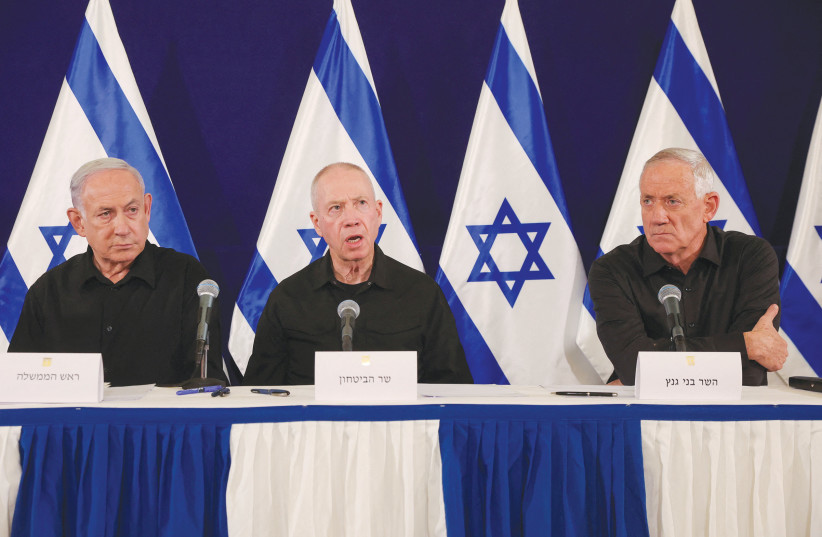
Sources within the government said that Netanyahu is "missing out on an opportunity to advance a hostage release deal."
On the other hand, political sources said that "they are still working on an Israeli outline; It has not been stopped."
Go to the full article >>US Senate tables resolution on potential Israeli human rights violations
Independent Senator Bernie Sanders of Vermont, Chairman of the Senate Foreign Relations Committee, introduced the resolution last year on Dec. 14.

The US Senate voted Tuesday night to table Resolution 504, which requested information on Israel's human rights practices and the US government's actions in supporting the Israeli government.
Senators voted in favor of tabling the resolution 72 to 11.
Chairman of the Senate Foreign Relations Committee, Independent Senator Bernie Sanders of Vermont, introduced the resolution last year on Dec. 14.

The resolution called for the secretary of state to submit information on allegations of human rights violations by the Israeli government, including disproportionate operations and the denial of basic humanitarian needs to people in Gaza.
The resolution asked for information on the US government's actions to promote the observation of human rights by limiting the risk to civilian life in Gaza and the West Bank and discouraging practices "inimical to internationally recognized human rights."
The resolution would require Secretary of State Anthony Blinken to release steps the US took to disassociate itself, publicly or privately, from any Israeli human rights violations.
Blinken would need to certify that the US has not assisted any Israeli security force unit that's committed human rights violations.
A list of US weapons and munitions provided to Israel since Oct. 7 would be requested, according to the resolution.
Also requested would be an assessment of Israel's compliance with international human rights and humanitarian law and an assessment of the US' actions to monitor protocols for weapons sold or transferred to Israel for use in Gaza and the West Bank.
Senators defend Israel
Before the vote, South Carolina Republican Senator Lindsay Graham likened the Israelis' need to ensure unconditional surrender from Hamas to the US decision to use the atomic bomb to force Japan's surrender in WWII.
"We're dealing with one of the most barbaric organizations in the history of the world who are bent on destroying the Jewish people, calling for attacks on the United States, and we have a resolution in front of us asking the Secretary of State to investigate the Government of Israel for war crimes," Graham said. "You talk about upside down and backward."
Graham said anything short of destroying Hamas militarily would be a "mistake for the ages."
"The proper response by Israel is to destroy Hamas. The problem Israel has in that task is Hamas is trying to make sure Israel kills as many innocent people as possible," Graham said. "Therein lies her dilemma."
Before the vote, Sanders said what the Senate is voting on is simply a request for information.
"We will soon be voting on a very simple question," Sanders said. "Do we support asking the State Department for information on whether human rights violations may have occurred using US assistance in Israel's military campaign? That's it. That's what this resolution is about. It is non-controversial and it should be passed in large numbers."
Sanders said the resolution is necessary because of the scale of destruction in Gaza, the indiscriminate nature of the military campaign, and the humanitarian catastrophe occurring.
The extensive use of US weapons in attacks that have killed 1,000s of civilians,
Sanders also said he was concerned about the extensive use of US weapons in the attacks as well as the implications of extreme statements and unclear intentions from Prime Minister Benjamin Netanyahu's government,
"It has been more than 100 days since this war began with the horrific commerce terrorist attack, which killed 1,200 innocent men, women, and children in Israel, and which took more than 200 hostages, over 100 of whom are still cruelly being held in captivity as of today," Sanders said.
"And while there is no question in my mind, that Israel has the right to defend itself and go to war against who started this terrible situation," Sanders said, "it is Israel that does not have the right to go to war against the entire Palestinian people and innocent men, women and children in Gaza. And tragically, that is what we are seeing right now."
Sanders said the military campaign waged by Netanyahu's government has been the most intensive bombing campaign of the 21st century.
The impending risk of famine and danger to children is why the resolution should be passed, Sanders said.
"We cannot turn away," Sanders said. "We must act."
Sanders said this is a tragedy in which the US is complicit in much of what is happening.
"Whether we like it or not, the United States is complicit in the nightmare that millions of Palestinians are now experiencing," Sanders said.
Sanders reiterated the point of the resolution is for information.
"No matter what your view on this terrible war may be, agree with me you don't agree with me, we cannot bury our eyes in the sand," he said.
Sanders said the Senate has had little meaningful debate on the war since Oct. 7 and only passed symbolic resolutions.
Sen. Jeff Merkley (D) Oregon said he's still strongly supporting Israel's right to go after Hamas, but also thinks there is a responsibility to ask questions about how a war is conducted.
Merkley said there are three reasons why the information requested in the resolution is important as it relates to the potential invalidity of the Israeli government's strategy that's targeting Palestinian people in Gaza, displacement, and humanitarian aid.
According to Merkley, the US supplied Israel with over 10,000 tonnes of military equipment since Oct. 7
"It would be useful to have our own government analyze this and understand why we are resupplying the various weapons that our government has said Israel should quit using into a more targeted campaign," Merkley said.
Merkley said the US should never be complicit in a displacement campaign "if that in fact is what's going on."
Maryland Democratic Senator Ben Cardin said the resolution is the wrong vehicle to deal with this issue.
"I strongly disagree with my colleagues," Cardin said. "Resolution 502 B was never intended to be used against an ally during a war. It's never been used for that purpose."
"Now, this resolution, as I said before, is much more than just requesting information. Its passage would be a gift to Hamas, a gift to Iran," Cardin said. "It would show a division between Israel and the United States, it's an indictment against Israel, make no mistake about it."
Cardin also said the resolution would make ongoing hostage negotiations more challenging.
"Yes, we can and should continue to push Israel towards a targeted prosecution of the war against Hamas and Gaza, but passing this resolution does not do that," Cardin said.
Cardin made the motion to table the discharge of the resolution.
Before the roll call, Sanders repeated the number of Palestinians that died so far in the war and the number of children facing starvation.
Israel, Hamas agree to send medications and aid to Gaza, hostages
The medications will leave Doha on Wednesday and will then be transported to Egypt.
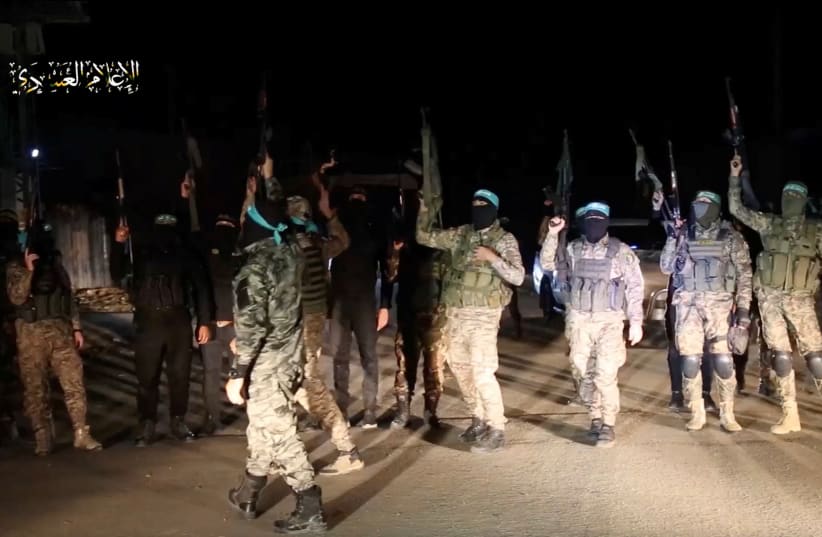
The Qatari foreign ministry also announced on X, formerly known as Twitter, on Tuesday that an agreement was reached between Israel and Hamas to send medications and aid into Gaza.
Qatari mediation succeeds in reaching an agreement, between Israel and Hamas to send medications and aid into Gaza#MOFAQatar pic.twitter.com/d99TcM7JT8
— Ministry of Foreign Affairs - Qatar (@MofaQatar_EN) January 16, 2024
Israel and Qatar have included the transfer of life-saving medicine to the hostages in the Gaza Strip during the last round of talks, according to reports by Israeli media on Saturday.
The agreement reached between Israel and Hamas stipulated that "medicine along with other humanitarian aid is to be delivered to civilians in Gaza Strip, in the most affected and vulnerable areas, in exchange for delivering medication needed for Israeli captives in Gaza," Qatar said in a statement.
The medications will leave Doha on Wednesday and will then be transported to Egypt, where they will be prepared to be transported into Gaza.
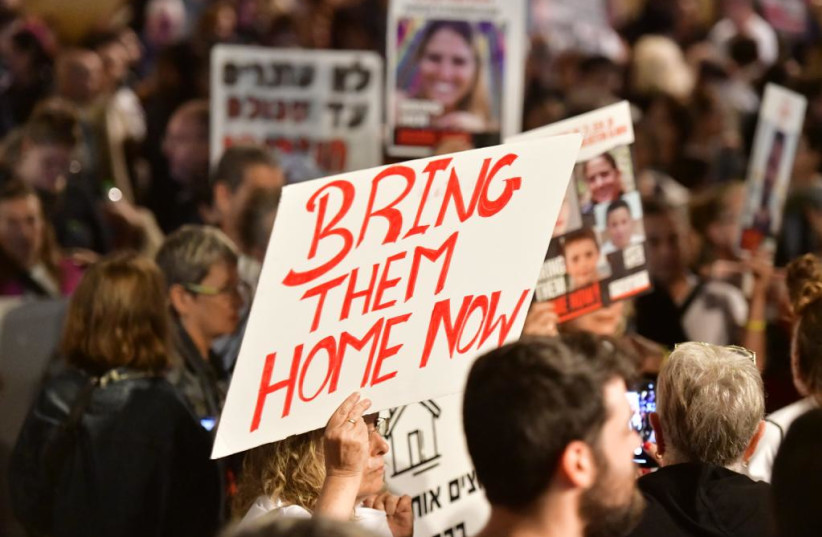
"On instruction from Prime Minister Benjamin Netanyahu and pursuant to the Director of the Mossad's agreement with Qatar on providing medicines to the Israeli hostages - Two Qatari Air Force planes are expected to fly tomorrow to Egypt with medicines that have been purchased in France, according to a list that was compiled in Israel, according to the medical needs of the hostages," the Prime Minister's Office said in a statement.
"Upon the planes' arrival in Egypt, the medicines will be transferred by Qatari representatives to their final destination inside the Gaza Strip," the statement continued.
"Prime Minister Netanyahu conveys his appreciation to all those who have assisted in the endeavor.
"Israel insists that all the medicines reach their destination," the statement concluded.
The Biden administration further "welcomed" an announcement by Qatar that it had reached an agreement to deliver medicine to hostages held in Gaza by Hamas, National Security Council spokesperson Adrienne Watson said on Tuesday.
US in negotiations to end Israel-Hamas War in exchange for hostages
The US is involved in negotiations in Qatar that are reportedly aimed at bringing an end to the Israel-Hamas War in exchange for a return of the hostages held by Hamas, Israeli media, citing a report, publicized on Tuesday.
The US has worked with Qatar and Egypt to mediate a deal for the release of the 136 captives seized during the Hamas-led attack on October 7 and held since then in Gaza.
The Biden administration "welcomed" the announcement by Qatar that it had reached an agreement to deliver medicine to hostages held in Gaza by Hamas, National Security Council spokesperson Adrienne Watson said on Tuesday.
Tovah Lazaroff contributed to this article.
Go to the full article >>Israeli hostages expected to receive a salary while in Hamas captivity
A new framework in Israel proposes that individuals kidnapped in Gaza receive direct, tax-exempt wages based on the army reserve payment system, aiming to alleviate financial burdens on families
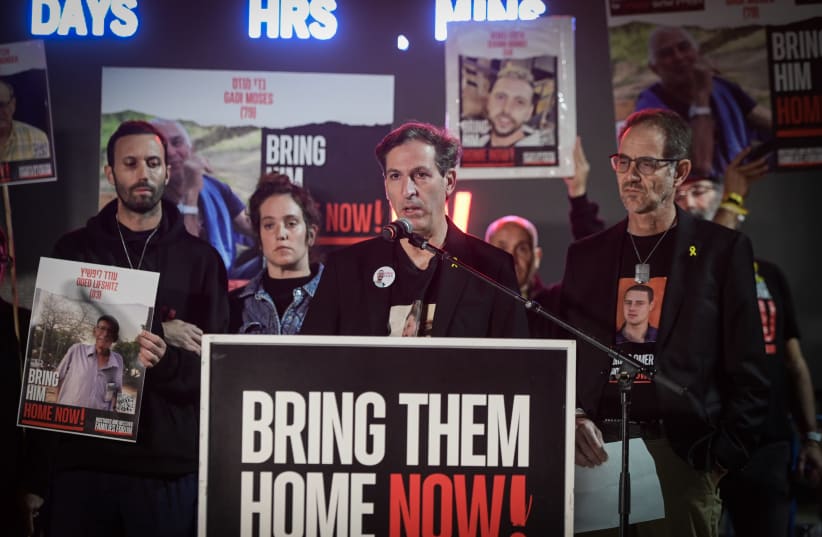
Every Israeli individual kidnapped individual will be entitled to a working wage, calculated based on the same remuneration system used for army reservists, according to an emerging framework by the government. This salary will be credited directly to the individual's bank account, exempt from tax or national insurance deductions.
According to information obtained by Walla! News, a unique framework for payments to those kidnapped in Gaza, was established on Tuesday. This decision emerged from a special meeting attended by the incoming head of the Kidnapped Persons Administration, Col. (Res.) Yaron Cohen, the Director-General of the Prime Minister's Office Yossi Shelly, the Director-General of the Finance Ministry; leading figures from the Justice Ministry; representatives of the National Insurance Institute, and other prominent individuals.
Details of the emerging framework:
Each kidnapped individual will receive a wage based on the payment system for army reservists. This wage will be directly deposited into the account of the kidnapped individual without any deductions for taxes or national insurance. Furthermore, the kidnapped individuals will receive this salary retroactively. For those who have already returned, an additional comprehensive solution is being developed (beyond the amount they have already received).
Additional proposals were considered but faced bureaucratic hurdles, such as legislative processes and other complications. The finalized framework is expedient and requires a legal and budgetary procedure from the National Insurance Institute. It has also come to light that the Director-General of the Finance Ministry has preliminarily approved the framework. Participants in the meeting agreed that the budget would be sourced from the National Insurance Institute, facilitated by an agreement with the Finance Ministry. Concluding the meeting, the Director-General of the Prime Minister's Office ordered an immediate commencement of the process.
Shelly confirmed these details, emphasizing, "The message we want to convey here is our commitment and efforts to provide relief and support to the families of the kidnapped."
The present situation:
In contrast to soldiers, civilians kidnapped and held in the Gaza Strip haven’t yet received any income during their captivity. Their financial obligations like mortgages, loans, and bills continue accumulating, and their employers cannot continue paying their wages since they are not working. In recent weeks, numerous families of kidnap victims have voiced their criticism about the lack of a system addressing this issue, highlighting an urgent need for a resolution.
Go to the full article >>IDF major escalation attacking dozens of Hezbollah targets in Wadi Saluki
Hamas fires 50 rockets at the South, but no casualties
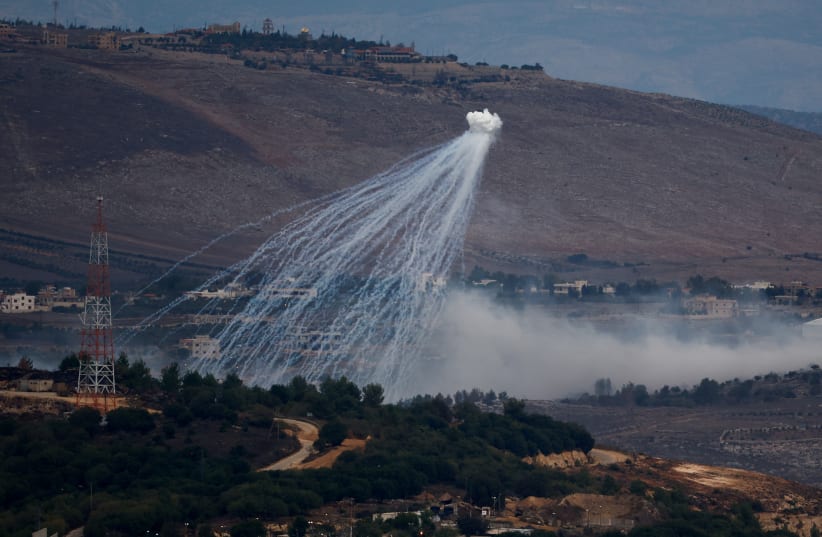
The IDF on Tuesday attacked dozens of Hezbollah targets in the Wadi Saluki village of southern Lebanon in a significant escalation between the sides.
Using both air strikes and artillery, the IDF blanketed the area with missiles and shells, where it said Hezbollah had concealed large numbers of military buildings, infrastructure, and weapons.
The village is slightly West of Kriyan Shemona and Menara in the Upper Galilee.
According to the IDF, Hezbollah has repeatedly used the area to carry out attacks against both Israeli soldiers and civilians.
Other than its extensive use of the village and a wide opening to hit many targets in a specific area, there was not necessarily an expectation that the IDF would hit Wadu Saluki more in the future versus another dozen or so villages where Hezbollah also operates.
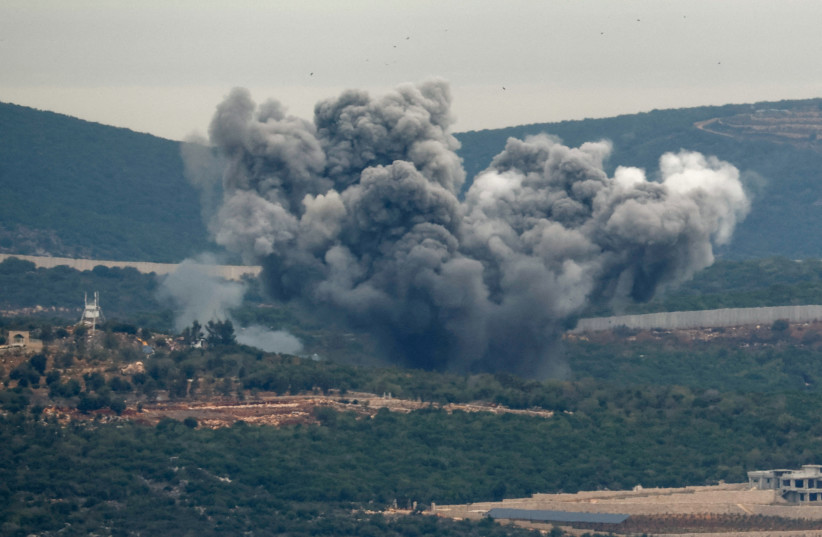
On Sunday, Hezbollah killed two Israeli civilians when it fired an anti-tank missile at a civilian residence in Yuval Village.
Though that was the only civilian death in the area, Hezbollah also fired anti-tank missiles at a variety of other civilian locations.
This came not long after Hezbollah attacked a key IDF air defense base on January 6 and the IDF Northern Command headquarters on January 9.
Hezbollah is escalating attacks
Likewise, Hezbollah's escalation came after the IDF has spent recent months gradually escalating attacks against Hezbollah forces in various southern Lebanon villages in order to push them back to an area around the Litani River.
In addition, the IDF has taken credit for killing Hezbollah's drone chief in southern Lebanon and has been accused by Hezbollah of killing its Radwan chief as well as Hamas's Deputy Chief Saleh al-Arouri while he was visiting Beirut.
IDF Northern Commander Maj. Gen. Uri Gordon on Tuesday said that the IDF was ready for an even larger escalation if that would be what it takes to press Hezbollah back from the border and return security to Israel's northern residents who evacuated the area in October.
"We are more prepared than ever...we can [go to war] tonight if needed," Gordin said. "We struck many terror cells in the North, more than 150 were destroyed, and a lot of their capabilities have been taken away.
"We are working to peel away Hezbollah's capabilities and pushing it as far back as possible. There is much more to do to bring the desired result of improved security in order to return northern Israeli residents to their homes."
It was unclear if Hezbollah would itself now escalate its attacks - it has 150,000 rockets and mortars, including longer-range precision rockets which can hit most of Israel - or whether both sides would step back from the recent escalation.
Around 180 Hezbollah and Hamas terrorists have been killed in Lebanon since October, while just under 20 IDF soldiers and civilians have been killed.
Israel has expressed hope for a diplomatic solution, including a Hezbollah withdrawal along the lines of UN Resolution 1701 from 2006, but to date, the terror group has resisted, and defense officials have said time is running lower to avoid a larger war.
Earlier Tuesday, the IDF said it sent special ground forces to operate inside Lebanon, eliminating a terror threat in the Ita al-Sha'ab area.
According to Hezbollah-affiliated news outlet al-Mayadeen, a different course of events took place.
It claimed that soldiers from the Maglan commando unit attempted to infiltrate the border near the al-Raheb military site to plant surveillance devices, but were noticed and aborted the mission.
The IDF did not provide more details on the operation.
Events also unfolding in Gaza
Also on Tuesday, Hamas fired 50 rockets from central Gaza on Israel’s South with one direct hit on a store in Netivot, but no reported casualties.
Hamas’s barrage of rockets was especially embarrassing to the IDF as it came from an area of Gaza where only one day earlier, on Monday, the IDF announced it was withdrawing Division 36.
It had said that central Gaza was moving enough in the right direction that even if it was not under full IDF operational control as northern Gaza is, a smaller number of forces, led by Division 99, could handle the job of mopping up the weakened remaining Hamas terror forces.
Pressed about whether the 50 rockets were a sign that Division 36 needed to be returned, IDF sources declined to comment, signaling that the withdrawal of those forces is part of a broader IDF and government hopes to maintain gains in Gaza with smaller forces.
Essentially, the strategy is that withdrawing significant forces will allow most reservists to return to their families and jobs, while also showing the US and other Western allies that the war will cause fewer Palestinian civilian casualties.
IDF sources also declined to explain why the IDF was avoiding parts of central Gaza where portions of Hamas’s leadership are reportedly holed up with some Israeli hostages.
Meanwhile, the military announced on Tuesday that two more soldiers have died, one from wounds sustained in December, and one in battle in central Gaza. Sgt.-Maj. (res.) Nitzan Schessler, 21, from Hadera, died in battles in central Gaza yesterday. Warr. Ofc. Noam Ashram, 37, from Kfar Saba, succumbed to his wounds yesterday after sustaining injuries in a central Gaza battle on December 29.
Also, in the Technology and Logistics Division of the IDF, serious progress was made, rehabilitating 13 out of 14 Gaza border outposts that were centers of destruction, shooting, arson, and looting on October 7.
The effort was led by the head of the IDF and infrastructure department in the wing's logistics division, Col. Maayan Liner, and this week the renovated outposts were officially handed over to the Gaza Division.
This excludes the Nahal Oz outpost, which will be demolished after most of its infrastructure is destroyed.
In addition to the renovated outposts, new battalion command posts will be built in the sector, using construction methods and architecture that have not been used before - subject to the General Staff's work in the Ground Forces, aiming to implement the lessons learned from the war.
Separately, the IDF 646th Brigade, together with Yahalom forces and engineering fighters from the 99th Division, destroyed an underground tunnel system belonging to Hamas that crosses the Nahal al-Hashur in the Gaza Strip, according to a Tuesday IDF statement.
The IDF described the tunnel as being nine meters below the surface and stretching for hundreds of meters. Significantly, it was used by Hamas to transport terrorists from the northern end of Gaza to the southern end.
Operating in the southern Gaza city of Khan Yunis, IDF commando forces launched targeted raids on the offices of high-ranking Hamas officials, the IDF stated on Tuesday.
According to the IDF, during a raid of Hamas’s Southern Khan Yunis Battalion Commander's office, Israeli troops found weapons, ammunition, and grenades, along with some Hamas lookout cameras.
The cameras were subsequently destroyed.
Prior to the operation against the offices of Hamas leadership in Khan Yunis, the IDF’s Firepower Command struck a number of targets in the area, including the headquarters of Palestinian Islamic Jihad.
Walla’s Amir Bohbot contributed to this report.
Go to the full article >>IDF commandos raid offices of Hamas leadership in Khan Yunis, destroy materials, kill terrorists
According to the IDF, during a raid of Hamas’s Southern Khan Yunis Battalion Commander's office, Israeli troops found weapons, ammunition, and grenades, along with some Hamas lookout cameras.
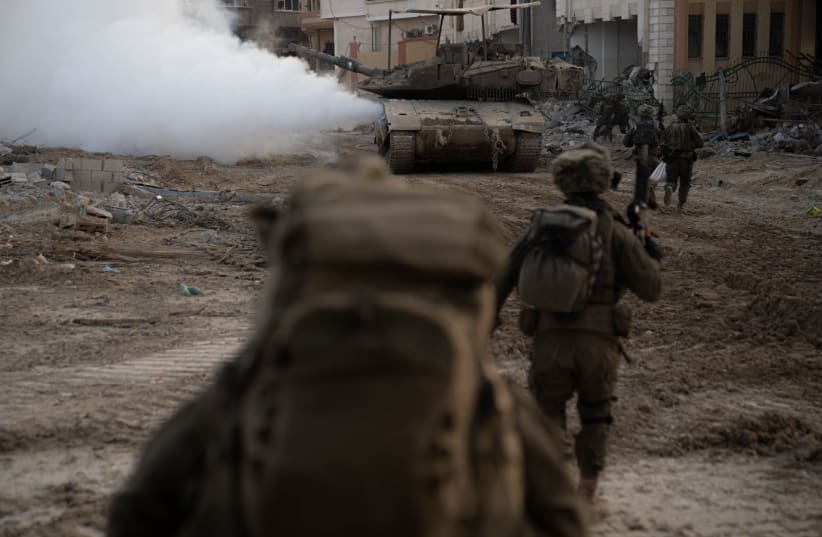
Operating in the southern Gaza city of Khan Yunis, IDF commando forces launched targeted raids on the offices of high-ranking Hamas officials, the IDF stated on Tuesday.
The IDF report comes following earlier IDF and Israeli media reports that an investigation revealed that Hamas had carried out an attack against IDF soldiers in Khan Yunis from Nasser Hospital in the northern end of the city.
The IDF noted that Hamas systematically exploits the Hospitals in Gaza to cover their military operations and uses civilians as human shields.
The IDF added that Hamas also takes advantage of hospital resources, including electricity and water.
Prior to the operation against the offices of Hamas leadership in Khan Yunis, the fire array of the IDF targeted a number of targets in the area, including the headquarters of Palestinian Islamic Jihad.
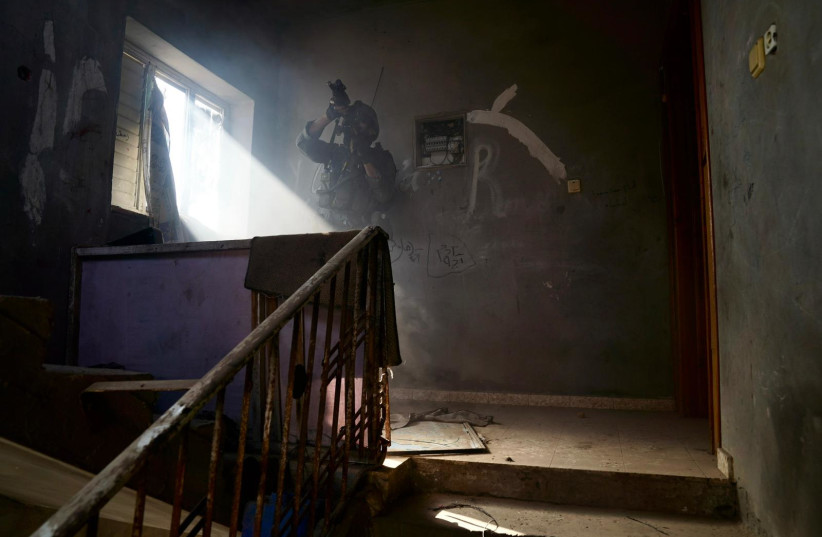
According to the IDF, during a raid of Hamas’s Southern Khan Yunis Battalion Commander's office, Israeli troops found weapons, ammunition, and grenades, along with some Hamas lookout cameras.
The cameras were subsequently destroyed.
This raid, the IDF added, was one of many successful raids throughout Khan Yunis.
Terrorists eliminated
During the IDF’s operational activities there, the military reported engaging and eliminating a terrorist squad in close-quarters combat.
The IDF commando troops fighting in the southern Gaza city enlisted on October 7 before engaging the terrorists that poured from Gaza into southern Israeli communities.
They were then deployed to northern Gaza before moving down to the southern portion of the Strip.
They are operating in the place of the IDF Duvdevan unit, which has been relocated from Gaza to act against security threats in the West Bank.
Go to the full article >>Has Hezbollah flipped the equation on Israel?
How much strategic and technical damage did terrorist group’s strikes cause the IDF?
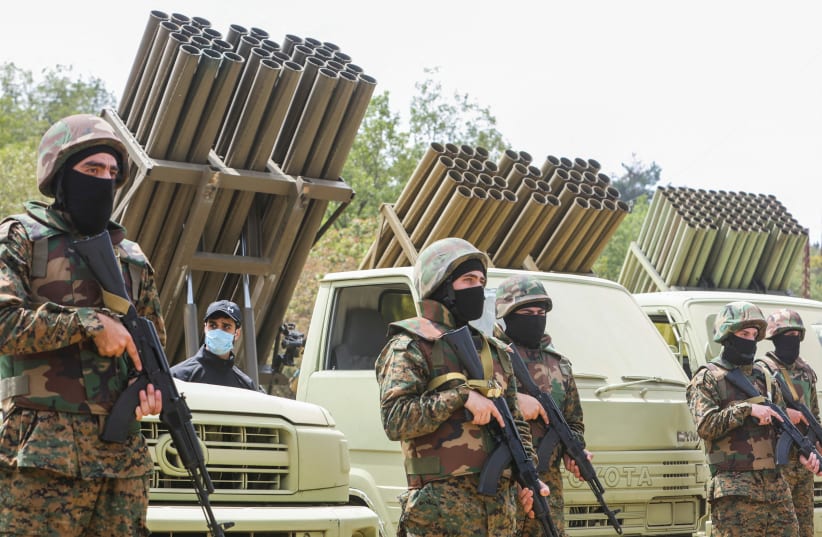
Twice in four days, Hezbollah carried out two successful and significant drone attacks on Israeli positions in the North. On January 6, it was the IAF’s traffic control base on Mount Meron, while on January 9, it was the IDF’s Northern Command Headquarters in Safed. Serious tactical errors contributed to the success of both attacks, though the impact of the latter one was minor.
Then, an anti-tank missile was launched at Moshav Kfar Yuval, killing Mira Ayalon, 79, and her son Barak, 45.
What is the significance of these attacks?
What is the significance of these attacks – both tactical and strategic? Have they helped Hezbollah flip the script on Israel? Did it bring the IDF to a point where it would claim it was progressing in “convincing” Hezbollah to withdraw its forces from the border? That this level of damage is qualitatively different and new?
Tactically, the air force installation had been attacked by Hezbollah before, and is close enough to the border that it should have prepared for an anti-tank missile threat – it has only prepared for rocket threats.

In the region, the Iron Dome and other air defense capabilities do provide coverage, but those defenses only shoot down rockets, which fly higher and on an arc-like trajectory.
Anti-tank missiles fly lower and in a straight line at the target, which are usually heavily armored vehicles, but can easily destroy a house.
The IDF has the Trophy defense system, to block such threats for a single armored land vehicle, but has not deployed defenses for larger areas – like an army base.
This all puts a real dent in the IAF’s capabilities and intelligence detection.
However, The Jerusalem Post has learned that the IDF does have redundancies: surveillance operators, mobile surveillance resources, and combat fighters performing intelligence collection operations.
A few years ago, the combat collection battalion had around 750 troops, with 100 emergency call-ups, and probably has much more in the middle of the current war, with the military’s full reserve complement of 360,000 having been called up in October.
Already in recent years, radars, which are far more advanced than optics detection systems and capable of seeing through foliage, have been used. The main system has been Elbit’s MARS ground surveillance system, which consists of surveillance cameras for different ranges and with different resolutions.
When the radar system spots something, the optical system is alerted and takes up the monitoring process. When it was introduced, the MARS system was hailed due to its ability to be controlled by one operator, whereas the prior system needed to be manned by six.
The Post understands that there are other mobile surveillance and detection systems on the ground posted in parts of the North. However, ground surveillance systems have inherent limitations.
The F-35 stealth fighter can be used for surveillance on basically any front that Israel needs, both from a distance and close-up.
The IDF has not provided drone statistics for the current war of over 100 days, but from May 9-13, 2023, military drones logged over 4,000 hours hovering over Gaza during a five-day operation against Palestinian Islamic Jihad. The logs over Lebanon from the last three months are presumably much larger.
There is also a whole fleet of older spy planes with updated surveillance systems, the Post understands, some of which can see up to 100 kilometers away, including to Damascus, from the Israeli side of the Golan – without even having to enter Syrian airspace at all.
Previously, IDF Lt.-Col. S. told The Post that his unit’s aircraft had “enhanced monitors which collect intelligence for the IDF’s target bank, for intelligence surveillance in general and a variety of special operations.”
A novel aspect of this unit is that “sometimes a representative from the land forces sits in the aircraft with us,” he said. “Earlier, the representative would have presented a briefing about what their mission is, what they are afraid might go wrong, what they want the aircraft to gather in terms of intelligence.
“Combining meeting on the ground earlier with flying together in the air creates deep synergy. This works,” S. added.
They can start surveying far-off areas sometimes after only a few minutes from takeoff since if the areas are open, their long-range cameras and sensors can already be used en route to the destination.
In August, Israel Aerospace Industries (IAI) said that its MAR2 Oron aircraft could be operational in the coming months. The IDF has declined to answer whether the aircraft is currently in use.
If it is, the MARS 2 spy aircraft mixes many of the physical aspects of the older Gulfstream G550 aircraft with a host of newly installed technologies. The 122nd Nachshon Air Force Squadron would be due to operate the aircraft.
It can withstand all inclement weather situations, which could be important for fighting Hezbollah mid-winter.
The MARS2 has eight intelligence collection operator workstations, multi-domain sensors, and a much higher level artificial intelligence (AI) capability for coordinating and systematically sharing the multiple intelligence inputs, The Post has learned.
This AI also knows how to focus more attention on more immediately actionable intelligence, including selecting some of its targets.
The aircraft is faster, can fly higher, travel farther, for about 15-16 hours, and its intelligence surveillance capabilities extend farther than other previous spy aircraft in Israel’s repertoire.
It can see and analyze issues hundreds of kilometers away, whereas many other systems only detect issues at much closer ranges.
Not only does its spying capabilities have higher resolution, a more sophisticated mix of different sensors, and greater interoperability than previous similar aircraft, but it projects its surveillance in all directions.
If previous spy aircraft were focused on an area in front of the aircraft, the MARS 2 can provide a 360-degree plane defense picture.
It is even superior to the F-35 surveillance systems which were developed around 10 years earlier than the newest technologies on the MARS2.
However, after all of the IDF’s ability to adjust tactically, the strategic issues remain considerable.
The military has no response, besides preemptive offense, to stop anti-tank missiles from hitting military or civilian installations within Hezbollah’s eight-kilometer anti-tank missile range.
The missiles speed of some 500 feet per second obviates detection and response.
What's stopping Hezbollah from attacking Israel with thousands of rockets?
If Hezbollah surprised Israel with anti-tank missiles in the above three locations with a few dozen rockets, anti-tank missiles, and drones – without breaking a sweat – what is there to stop it from surprising the IDF with 8,000 rockets all at once against Haifa or Tel Aviv?
To date, the IDF has tried to keep Hezbollah on its heels by attacking it, including with simultaneous attacks on Wadi Saluki on Tuesday.
The IDF has also killed Hezbollah’s drone chief Ali Hussein Bergi, with the terrorist group accusing Jerusalem of killing Hezbollah’s Radwan chief Wissam al-Tawil.
There is no question that Hezbollah has moved back many of its forces from the border and that around 180 Hezbollah and Hamas-affiliated fighters were killed in Lebanon compared to around 20 IDF soldiers to date.
But until the IDF figures out how to thread the needle perfectly – hit assets or persons critical enough to Hezbollah to get it to move all of its forces away from the border and beyond anti-tank missile range, without overstepping into a general war – it will be hard for Israel to translate its military superiority into long-term sustainable security gains.
Go to the full article >>Israel-Hamas War: What you need to know
- Hamas launched a massive attack on October 7, with thousands of terrorists infiltrating from the Gaza border and taking some 240 hostages into Gaza
- Over 1,200 Israelis and foreign nationals were murdered, including over 350 in the Re'im music festival and hundreds of Israeli civilians across Gaza border communities
- 136 hostages remain in Gaza, IDF says